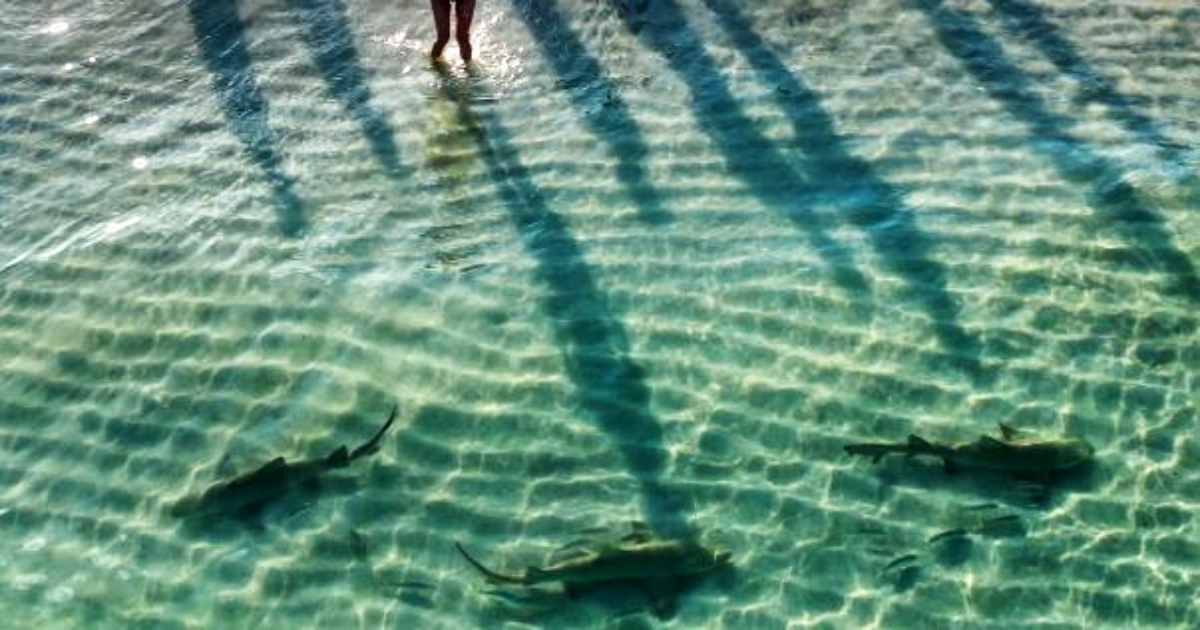
Bathers spending the weekend on a beach in Miami were surprised by the visit of three sharks that came to the shore to explore.
“Only locals,” the news site jokedlifestyle_miami, which shared an impressive aerial image of the sharks on the shore, while bathers remained out of the water, wary of the visit.
Several users identified the animals as “nurse sharks” and commented that they are a harmless species to humans.
Also known as the spear shark, nurse shark - or cat shark, as it is known in Cuba - the natural habitat of this species is warm waters.
They can be seen in the United States near the coast of New York, in Spain, France, various regions located in northern West Africa and certain areas in the Indo-Pacific.
Nurse sharks acquire their food at the bottom of the sea and therefore spend most of their time at depths greater than 12 meters, although they usually swim in sandy coastal areas such as reefs or mangroves.
The skin of the nurse shark has a soft texture, the predominant color is brown, however it has other shades of gray, black or white. The size varies between 2.5 to 4.3 meters in length, the common weight is 90 to 150 kilograms and it has two rows full of sharp teeth with the ideal curvature to tear its prey to pieces.
The skin of the nurse shark has a soft texture, the predominant color is brown, however it has other shades of gray, black or white. The size varies between 2.5 to 4.3 meters in length, the common weight is 90 to 150 kilograms and it has two rows full of sharp teeth with the ideal curvature to tear its prey to pieces.
These types of sharks classify among the most harmless species. The few recorded attacks on humans are caused by provocation from man himself and the animal defends itself when it feels threatened or invaded in its space.
It has two dorsal fins, two pectoral fins plus a caudal fin and a long tail; The size of the head is larger than its mouth and two thin organs located in the front part of the nostrils stand out; They fulfill the function of detecting the taste or blood of their prey from a distance, due to these whisker-like protuberances.
They usually sleep for much of the day, when it begins to get dark they meet other nurse sharks and are in litters of 20 for short periods of time until night comes, during these hours they hunt for food or swim long distances.
Their favorite prey is squid and octopus, and they can also hunt small or medium-sized fish, oysters, shrimp, stingrays and sea urchins. With the help of the protuberances in their nostrils they detect the blood of their prey up to five kilometers away.
They can move at 40 km/m when they are hunting, when they have the food close enough they suck it, close their mouth tightly so that it is trapped between their sharp teeth and eat it in a matter of seconds.
What do you think?
COMMENTFiled in: